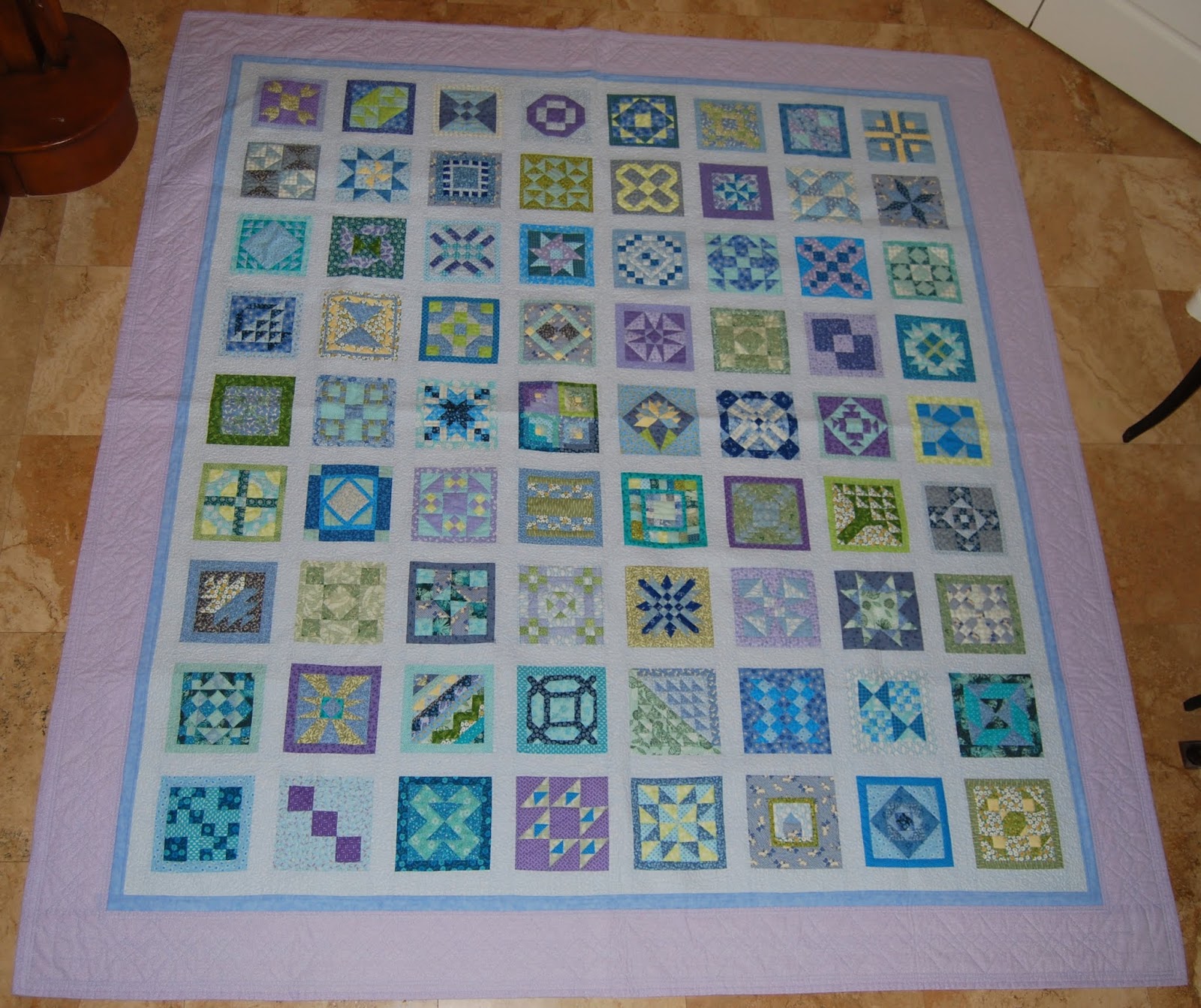Sampler History (3 of 4)
One of my knitting buddies just shared that she had started
a new project with an unfamiliar pattern. Before beginning the full project, she took the
time to knit through the pattern in a smaller portion as a trial run. She was
taking part in the age-old learning method of the sampler. Assuming she didn’t
pull it all out to incorporate the yarn into her project, she now has a
square of this pattern.
I’ve learned from my summer history reading that this
is how some sampler quilts came in to being. It turns out that the sampler
quilt in the form that I’ve been practicing- gathering various blocks
to try them in coordinated fabrics and setting them in a quilt, might be a relatively
new phenomenon. Perhaps it has gained popularity with books of pattern collections which include an example of a sampler
option that incorporates all the pattern blocks in one quilt... a final “ta da!”
moment at the end of the book.
This sampler quilt was inspired by Laurie Aaron Hird's book,
The Farmer's Wife's 1930's Sampler Quilt.
It was made in 2016 for one of my kids who requested a "retro"quilt.
A sampler quilt was composed of a quilter's collection of single blocks. She might have been in the practice of making a trial block before starting a full project. She might also have a collection of left-over blocks from projects- remember this was before the advent of precise instructions giving the yardage for each piece within a given block. In reality the original quilter may never have had the intent of creating a sampler quilt with her collection of blocks; it could have been the effort of another quilter who wanted to put them to good use. In any case, collecting these blocks in a quilt would serve several purposes: it was a visual history of the quilters' projects, and, in the place of our modern quilt pattern books, it could be a reference for future quilters looking for new patterns to try.



.jpg)
Comments
Post a Comment